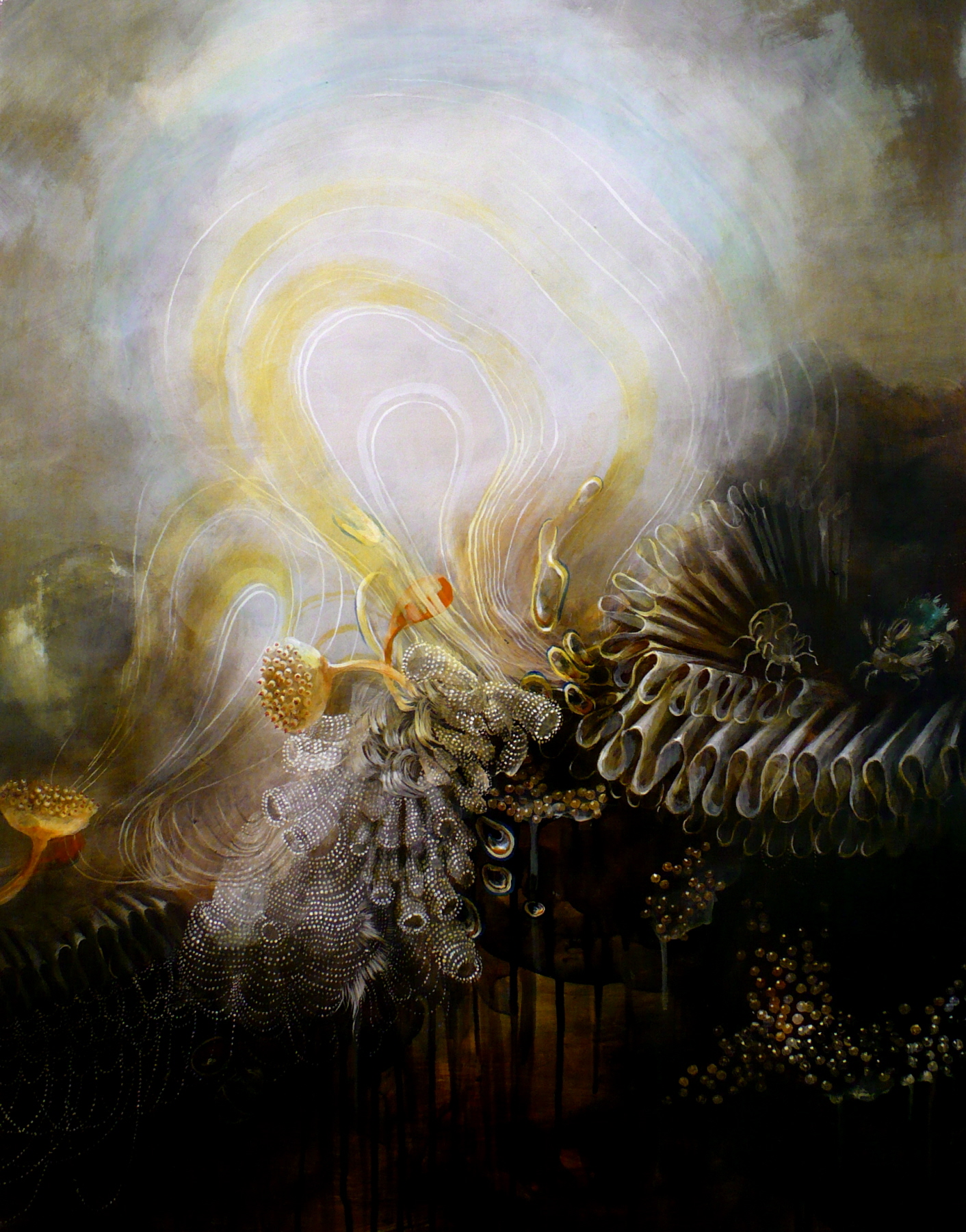Apocalypse Maine
Biennial art exhibitions, whether by invitation only or juried shows open to all, have become waypoints on the contemporary art landscape, providing artists and audiences alike a chance every couple of years to see what’s new, what’s happening, who’s hot, who’s arrived. As big, brawling, messy, and imperfect as they are, biennials are welcome events, […]

Heat Apparition by Nicole Duennebier
Biennial art exhibitions, whether by invitation only or juried shows open to all, have become waypoints on the contemporary art landscape, providing artists and audiences alike a chance every couple of years to see what’s new, what’s happening, who’s hot, who’s arrived. As big, brawling, messy, and imperfect as they are, biennials are welcome events, if only for the fact that they give artists and art lovers something to talk about.
The most prestigious international biennials are the Venice Biennale, the 53rd edition of which will take place in 2009, and the Bienal de Sao Paulo, the 28th edition of which takes place October through December of this year in Brazil. The most important American biennial is the Whitney Biennial, the 74th of which was held earlier this year at the Whitney Museum of American Art in New York.
Maine is blessed with biennials at both the Portland Museum of Art and the Center for Maine Contemporary Art in Rockport. CMCA (formerly known as Maine Coast Artists) is a non-profit, non-collecting institution that exhibits the best in Maine art year round in its barn-like gallery in coastal Rockport, home also to Maine Media Workshops, one of the East’s premier photography, film and video programs, and the Center for Furniture Craftsmanship, a well-known woodworking school.
CMCA, which has been mounting annual or biennial juried shows since 1978, is currently (through October 4) featuring the “2008 Biennial Juried Exhibition,” a marvelous free-for-all of new art by some 89 artists selected from among 737 artists who applied. The jury this year consisted of Carole Anne Meehan, curator at the Institute of Contemporary Art in Boston; Scott Peterman, one of Maine’s best and best-known photographers; and Andrea Pollan, founding director of the Curator’s Office, an innovative art exhibition project in Washington, D.C.
When Maine biennials began in earnest in the late 1970s there was usually a lot of discussion and debate about who was legitimately a “Maine artist” and what constituted true “Maine art,” but in the pluralistic society of the 21st century these provincial designations have pretty much ceased to have meaning. The artists in the 2008 CMCA biennial run the gamut from native born Mainers to year-round residents, seasonal residents, former students at Maine schools, and artists who just visit the state. The art in the show demonstrates that “Maine art” now differs in no significant way from art made anywhere else in the global village. With a few exceptions, the CMCA biennial could easily be an exhibition of artists in Boston, Providence, or New York.
That said, the CMCA show does necessarily represent what is most popular in terms of art in Maine, that still being the tradition of landscape painting. In this vein, there are but few examples in the Rockport show — a house on the island of Vinalhaven painted by Connie Hayes, an icy seascape by Sarah Knock, that’s about it for tradition.
The Biennial Jurors’ Prize (a solo show in January 2009) was awarded to Melinda Barnes, a Portland-based artist, for a tiny graphite drawing of a doorbell. Honorable mentions went to Kate Beck for a minimalist oil, Joshua Ferry for a layered and polished geometric abstraction, and Anna Hepler for a luminous little diorama of a projection room. Beck and Ferry are graduates of Maine College of Art. Hepler teaches at Bowdoin College. The dominant aesthetic in contemporary art these days, properly reflecting the strange times we live in, is what one might call “apocalyptic,” art that has a sense of being overwhelmed by information and imagery. This being so, had I been a biennial juror I might have argued for prizes for three artists who respond to our estranged and entropic society is distinctly different ways.
Greta Bank’s contribution to the biennial is an ornate set of four antique chairs set against a lavish pink and gold background featuring images of a consumer culture run amok yet executed in a highly decorative way. The installation is fittingly titled “Clearance:Four Horsemen,” the biblical Four Horsemen of the Apocalypse being Conquest, War, Famine, and Death. Nicole Duennebier’s “Heat Apparition” is a dark, phantasmagoric painting that seems to combine benthic life forms with the elaborate folds of a 16th century collar. As with all of the Duennebier paintings I have seen (mostly at Aucocisco Gallery in Portland), “Heat Apparition” is wondrously strange and excessive, both deeply beautiful and deeply disturbing.
Finally, I would recommend Lucy White, an artist now working in Boston, as one of the most interesting painters to come out of Maine in recent years. Her “Hospital I” is one of her signature Band-Aid paintings, a church surrounded by crosses, all fashioned from Band-Aids. As with her “Concealed Weapons” paintings of guns, Lucy White is a wicked ironist, visually witty and philosophically on target most of the time.
“2008 Biennial Juried Exhibition,” Center for Maine Contemporary Art, 162 Russell Ave., Rockport, ME, 207-236-2875.
Edgar Allen Beem
Take a look at art in New England with Edgar Allen Beem. He’s been art critic for the Portland Independent, art critic and feature writer for Maine Times, and now is a freelance writer for Yankee, Down East, Boston Globe Magazine, The Forecaster, and Photo District News. He’s the author of Maine Art Now (1990) and Maine: The Spirit of America (2000).
More by Edgar Allen Beem

